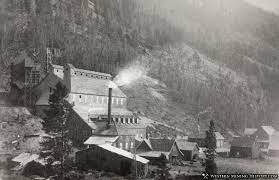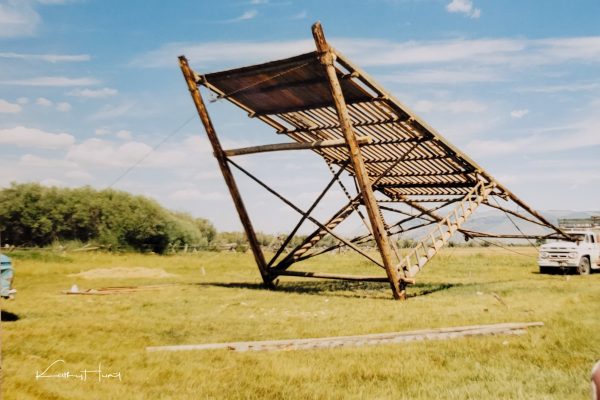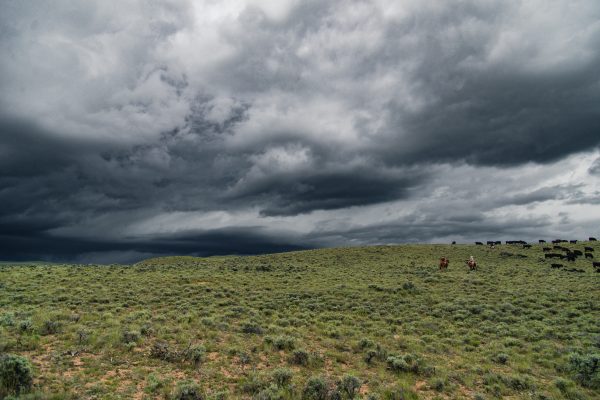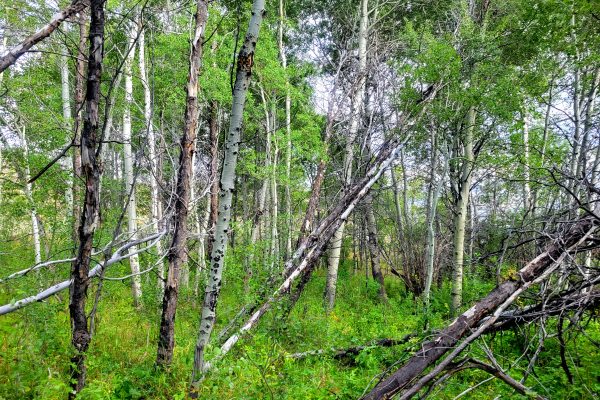In spite of the wave of violent destruction that tore through his country in the summer of 1941, Mr. T. Kan, a Chinese forestry professional, reflected in quiet awe as he gazed at the great coniferous tree next to the village temple in Modaoqi, a tiny hamlet in the Eastern Sichuan province of China. The great Yangtze raged nearby, swollen with snowmelt from the Tibetan highlands on its journey to the sea, and Chinese troops had been pouring into the Sichuan countryside following the river corridor upstream in retreat from the Japanese onslaught. Kan had used the same travel way, fleeing the worst of the fighting even as the Japanese Imperial Army was sweeping across coastal China. Some of China’s largest cities had fallen to the invaders that relentlessly wreaked havoc under the flag of the Rising Sun. Shanghai had fallen, as had the Chinese capital city of Nanjing. China was a nation in upheaval.
Kan had never seen a tree like this. Lovely in form, with its massive buttressed trunk and lacey light green needled foliage, the well-travelled forester inquired of villagers as to what its name was. They called it Shui-sa, or water fir. According to the local folk, the ancient tree was said to be the residence of a god. The villagers took him to a cathedral grove of the stately and massive trees nearby. Winds whispered quietly through the frond-like crowns as an ethereal green light reached the forest floor, filtered by the lace of the foliage. Nowhere else had the tree been described, Kan thought, even from what he could subsequently find in writings from around the world.
He was correct. The tree had never been described. But in that exact same year, a botanist named Shigeru Miki from Japan—the mortal enemy of China–was finishing his scientific paper describing the very same tree.
The only difference between the two accounts of “Shui-sa,â€as the Chinese villagers called it, was that Kan’s version was alive and well. Japanese botanist Miki’s version was quite dead. He had never seen a green leaf, let alone a living specimen. In fact, by his reckoning, the foliage he was documenting had been dead for tens of millions of years. He was a paleobotanist, and by trade was tasked with the business of naming and classifying plants found in the fossil record. Mr. Miki believed that the tree he named Metasequoia, meaning “like the sequoia†had been extinct for 10 million years. Indeed, the fossilized foliage was much like that of the Giant Sequoia of California, the most massive trees on the planet. He was correct in his description. The two Sequoias were close relatives; botanical cousins within the same taxonomic genus.
The two botanical scientists knew nothing of the other’s work. It wasn’t until 2 years later, as the destructive force of World War II continued to spread across the Far East that it was realized by both men that the fossil and the living specimens were not only related, but identical twins in the taxonomy of trees. Mr. Kan had discovered a living fossil. Nature and the study of it have a way of continuing to intrigue and bond in a kinship of curiosity even those separated by the boundaries of war. Undoubtedly it provided a counterpoint of sanity for these men studying nature despite the tumult and terror of war that defined life in their respective countries.

I let Caryl go first on her mare, Robin. It was early Idaho spring, and the big sorrel horse was barefoot and not yet shod for the rocks and rills of the high country. I figured Caryl would let her have her head and pick her own way through the volcanic rocks that covered the landscape on the low rangeland hills next to Alderspring. We had let the horses stop for a little breather while at the foot of the high Pahsimeroi Mountain range we had just begun to climb.
From our vantage point, we could see that the flat valley of the Pahsimeroi River was filled nearly level with the substrate from the big drainage fans that formed as the mountain creeks emptied their sand, dust, and stone burdens into the broad valley bottom. There was a lot of valley country that we could not see, buried under trillions of tons of gravel and sand. The Pahsimeroi Valley was like a bowl of sand, shaken to levelness. The sides of the bowl were the mountains on which we rode horseback today.
It was one of the many spring training rides we put on our mounts to get them ready for their summer work on the range. We were without cattle, and only wanted to get our horses feet under them on the range again after the cushy winter on the soft meadows of the home ranch. There were plenty of rocks up here, and now Caryl had dismounted to get a look at one in particular—or so I thought.
“Didya find a nice agate?†I said as I pulled my buckskin up. Agates were very common in our mountains with their volcanic origins, as were geodic crystals. We had a fair amount sitting on windowsills at home.
“Nope.â€
Of course, I thought. She’s a PhD botanist, stupid. She’s looking at another plant. She’s always looking at plants. Even at 80 mph on Interstate 90 across Montana’s Big Sky, she’s looking at plants. “STOP the truck!†she’d say. And we often did. She’ll jump out and grab a specimen. “It’s an Astragalus (locoweed) I’ve never seen before!â€
So I asked. “You lookin’ at a plant?â€
She looked up and smiled. “Well, kind of.†Caryl looked back at the ground, and back up at me. “You tell me what you see.â€
As I got off my mare, I thought that statement was in perfect character for my wife. She wasn’t always real transparent. Kids and husband had to pretty much figure it out. It was the natural teacher in her—there was no free lunch with learning with her. It was unfortunate that sometimes I could be a crappy student. Too ADHD to listen, even at the ripe old of age of 55. My visual mind was all over the map, taking in stimuli from all sides; the geography, the vegetation, the geology. Life on Earth was happening, after all, and there was always so much to take in.
I followed her eyes to a little mound of dirt in the sagebrush about 20 feet away. Radiating from the mound were hundreds of chips that looked a little like wood, but I knew that there wasn’t a tree for miles where the rain shadow of the high Rockies meant too little rainfall for trees.
I walked over and picked up one of the chips. It was about 3 inches long, and I looked at the end of the fragment with an instant light bulb moment of recognition. “It’s petrified wood.†My forestry mind took over and kicked into high gear. I picked up another specimen, and could clearly see the annual tree growth rings on a bit of a tree long buried by the sands and volcanic ash of geologic time.

My mind sped back to my early forestry days at Lavelle Farms, a tree nursery where I was gainfully employed. I was 19 years old, and my favorite place in the expansive nursery was at the picnic table where the crew enjoyed lunch. It was under the cool shade of a fast growing and mature Dawn Redwood. It was the common name appropriately applied to it; after all, it was a redwood from the dawn of vegetative time on the planet Earth. Its other name was Metasequoia, and originated from seed that had been brought back from China—from along the banks of the Yangtze, and had found its way into the hands of my boss and great collector, curator and grower of exotic East Asian conifers, Mr. Lowell Kennedy.
Somehow, tree lover that he was, Lowell had heard the story of Metasequoia, and likely traveled to the Orient to obtain seed. He planted it immediately thereafter, and it grew well in its new North American environs. It was from Mr. Kennedy in 1980 that I first heard the story of Mr. Kan; the legendary forester was likely still living in China somewhere at that time. In just 35 years, the Dawn Redwood I knew grew to over 4 feet in circumference, and provided abundant shade. I, like Mr. Kan, was captivated by Metasequoia; the story, and most of all, its great beauty.
Now, on this high Idaho desert landscape in the shadow of 12,000 foot snow covered peaks, Caryl and I took our discovery in and looked further, and we could tell that we were standing in a semblance of an ancient forest. As in a decrepit cemetery, several other mounds and petrified chip scatters could be seen dotting the hillside. My eye drifted toward the ranch; our beeves were quietly reveling in abundant spring grass. Under their feet was soil comprised of volcanic and ashy rubble. Deep beneath that volcanic and alluvial deposit was likely buried thousands more of the ghostly fossilized trees. They were a silent testament to ancient times when rains fell and climates were warmer.

And I suppose you, dear reader, now understand just how small yet amazing our world can be, as you have likely figured out that the petrified trees Caryl and I had discovered were Metasequoia. We both knew this from conversations with paleobotanists we’ve met over the years (there are more of them than you’d think). It was the same species of tree, or a close sibling of it, found by Mr. Kan in the Sichuan of China and described by Mr. Miki in Japan. Dawn Redwood used to grow on Alderspring, but it was an Alderspring that looked quite different than it does now; it was wetter and warmer like the area of Eastern Sichuan Province is today. The valley wasn’t yet filled with sand and ash rubble. Winters of 30 below zero just didn’t happen.
But the same volcanic tumult and climatic shift that killed entire forests of Metasequoia from Oregon to Yellowstone has created a unique advantage for us in endlessly deep soils that come not from slow weathering of rock, but are actually violently ejected as nutrient dense fine mineral materials directly from the earth in the form of volcanic ash. That ash provided an immediate and perfect soil matrix for nutrient dense grass that didn’t need any weathering from rock to become useable by bacteria and fungi and the grass roots they partner with. And that grass gives our beeves a perfect place to imbibe and produce protein laden with wellness.
Despite the catastrophe that it was, I am thankful that those events occurred; it has created for us a perfect place to raise food for a people in search of flavor and wellness. And in our tiny millisecond interval on the clock of geologic time, we will do our level best to meet that need. And while we do so, we’ll always be reminded of the epic scale and interrelationship that defines life on Earth by bumping into the likes of Metasequoia. Thanks for coming with us.







Leave a Reply